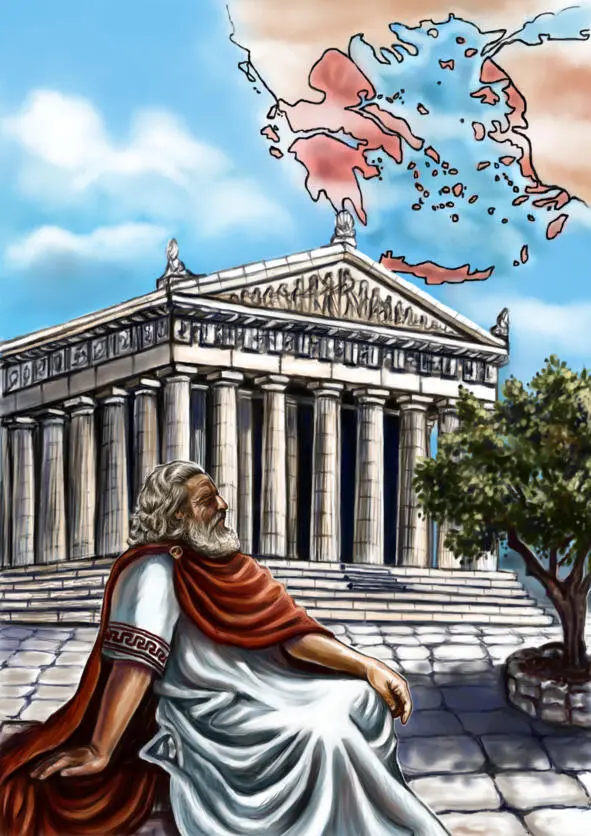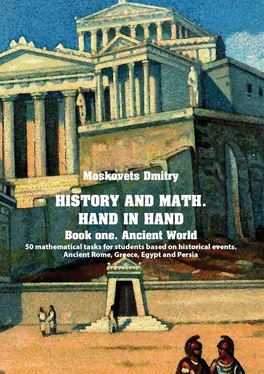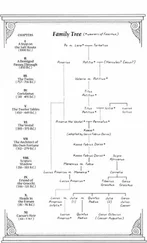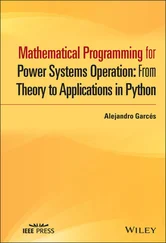P.3. The population of the planet
Some historians suggest that at the height the Achaemenid Empire half the world population lived there. The most numerous at that time was the Indian nation, and 1/7 of the Indians was part of Achaemenid Empire. How many people lived outside India and Persia at that time, if the number of Hindus in the Achaemenid Empire was 10%? (Hint: read the beginning of the chapter).
P.4. Army size
The most important battles in the history of Ancient Persia are the Battle of Thermopylae, in September 480 BC, in which Leonidas 10 10 Leonidas I was a king of the Greek city-state of Sparta from 491 BC until 480 BC.
and his 300 fearless Spartans went down in history for centuries, and the Battle of Gaugamela on October 1, 331 BC, after which the Achaemenid Empire ceased to exist, conquered by young Alexander the Great (see more in task D.4). In both cases, the Persians had huge armies: both armies added together constituted 0.9% of the total population of the Empire. How many Persian soldiers took part in the Battle of Gaugamela, if we know that there were 1/4 more of them than in the Battle of Thermopylae? The population of the Empire equaled 50 million.
P.5. The King`s «eyes» and «ears»
A whole army of spies worked for Cyras II the Great 11 11 Cyrus II was the founder of the Achaemenid Empire, the first Persian empire.
. They were keeping an eye on everything that was going on in the Empire. Some even believe that the security servicemen lined up in a chain from the capital to the outskirts and shouted the latest news to the next in the chain.
It took thirty days for an army to march from the border of the Empire, but the king could know it was approaching in just one day because of his line of spies.
See whether this is possible if the army moves 8 hours a day, the king`s «ears» stand every 200m and the speed of sound 330 m/s. (for convenience sake, let it be 300 m/s). The speed is 5 km/h.
Let’s assume that it takes 10 second to convey the message from one spy to another.
P.6. Anniversary of Cyrus II.
Have you ever attended the king’s anniversary? No? But they are still held. Iran, for example, celebrated the 2,500 anniversary of the death of King Cyrus II in 1971. How long did Cyrus live, if he came to the throme in 559 BC, when he was 31 years old?

Ancient Greece was home to many mathematicians, philosophers, sculptors, and, of course, military leaders. It is also a place that gave democracy to the world.
G.1. Athens is the capital of Greece
The history of Athens dates back centuries. It is difficult to tell exactly who and when founded Athens. The period of greatest prosperity of Athens was the 5 thcentury BC. Naming the exact number of population also proves to be a difficult task – the census was not conducted, and no one saw slaves as equal men: they were seen as property. Aside from slaves, there were wealthy citizens in Athens (slave owners, artisans), demos (poorer citizens), metics (migrants). Let’s assume the following: there were 90,000 slaves in Athens (historians believe this number to be 75—100 thousand) and settlers accounted for 20% of the population. There were as many citizens as slaves and metics combined. How many people lived in Athens?
G.2. Alexander the Great – a builder?
Let’s add together the number of cities founded by Alexander the Great 12 12 Alexander III (Alexander the Great, 20/21 July 356 BC – 10 June 323 BC) of the Argead dynasty was a king and a military leader of the ancient Greek kingdom of Macedon, who created one of the largest empires in history that collapsed after his death.
and the number of modern countries where those cities are located. (Half the number of the cities) Then, add another 1/10 of the total number of cities and states, and we’ll get the number of years Alexander the Great lived. By the way, he used to name his cities Alexandria. 3/5 of the cities founded still exist, but have changed their names, all except for one. How many cities, founded by the King of Macedonia, have survived to this day? Alexander the Great was born in 356 BC and died in 323 BC.
G.3. How many students were in Pythagoras’s school? 13 13 This is a very old task. The author found it necessary to mention in his book. He first came across it in a school math club a long time ago and then, in 2014, saw it in a History in Arithmetic in Science and Life .
«Tell me, famous Pythagoras 14 14 Pythagoras of Samos (c. 570 BC – c. 495 BC) was an ancient Ionian Greek philosopher and the eponymous founder of Pythagoreanism.
, how many students attend your school and listen to your speeches?»
«I’ll tell you,» the philosopher replied. «Half of my students study mathematics, a fourth of them – music, and a seventh of them have taken a vow of silence. Additionally, there are three women.
How many students are there in Pythagoras’s school? They were also called «Pythagoreans».
G.4. The Battle of Gaugamela, and Darius III’s 15 15 Darius III was the last Achaemenid King of Kings of Persia, reigning from 336 BC to his death in 330 BC.
miscalculation
Like many generals, Darius III had initially underestimated his enemy. Therefore, he hastily gathered war elephants, 200 chariots, infantry and cavalry and recklessly rushed into battle. The Macedonians immediately captured the elephants, and Alexander’s 7,000 horsemen and 40,000 infantry put the Persians to flight.
Indeed, some historians claim that Darius’s army outnumbered the Macedonians by ten to one. However, there are more conservative estimates. How many horses took part in the battle if a chariot was harnessed with two 2 horses, and Darius had 8 thousand more cavalry than Alexander had infantry? Remember that this event took place on October 1, 331 BC, after which the Achaemenid Empire ceased to exist. 16 16 Let’s assume that the book was published in 2017.
G.5. Calendars and sport
As you may have already guessed, we are talking about the Olympics. From the first Olympics the ancient Greeks began to count years using their calendar. Calculate in what year, according to the ancient Greek calendar, this book was published, if the first Olympics took place in 776 BC.
G.6. The Battle of Thermopylae
The Battle of Thermopylae took place in September 480 BC. This unique battle is notable for an almost 40-fold superiority of the Persian forces. If the Greeks had 200 soldiers less, then, according to Herodotus 17 17 Herodotus was an ancient Greek writer, geographer, and historian.
, the Persian army would have been 40 times larger than the Greek. As you know, the Spartans, like the rest of the Greeks, fought to the death. Only the betrayal of a local resident allowed the Persians to attack the rear of the Greek positions. Leonidas foresaw this and therefore sent part of his army back. After 4,000 Greeks were killed and the Persians lost 20,000, the Persian army became 150 times larger than the Greek. How many soldiers were in the Persian army?
G.7. Pericles 18 18 Pericles (c. 495 BC – 429 BC) was a Greek statesman and general during the Golden Age of Athens. One of the founders of the ancient democracy.
, the father of Athenian democracy, or what did Pythagoras have to do with him?
Читать дальше













